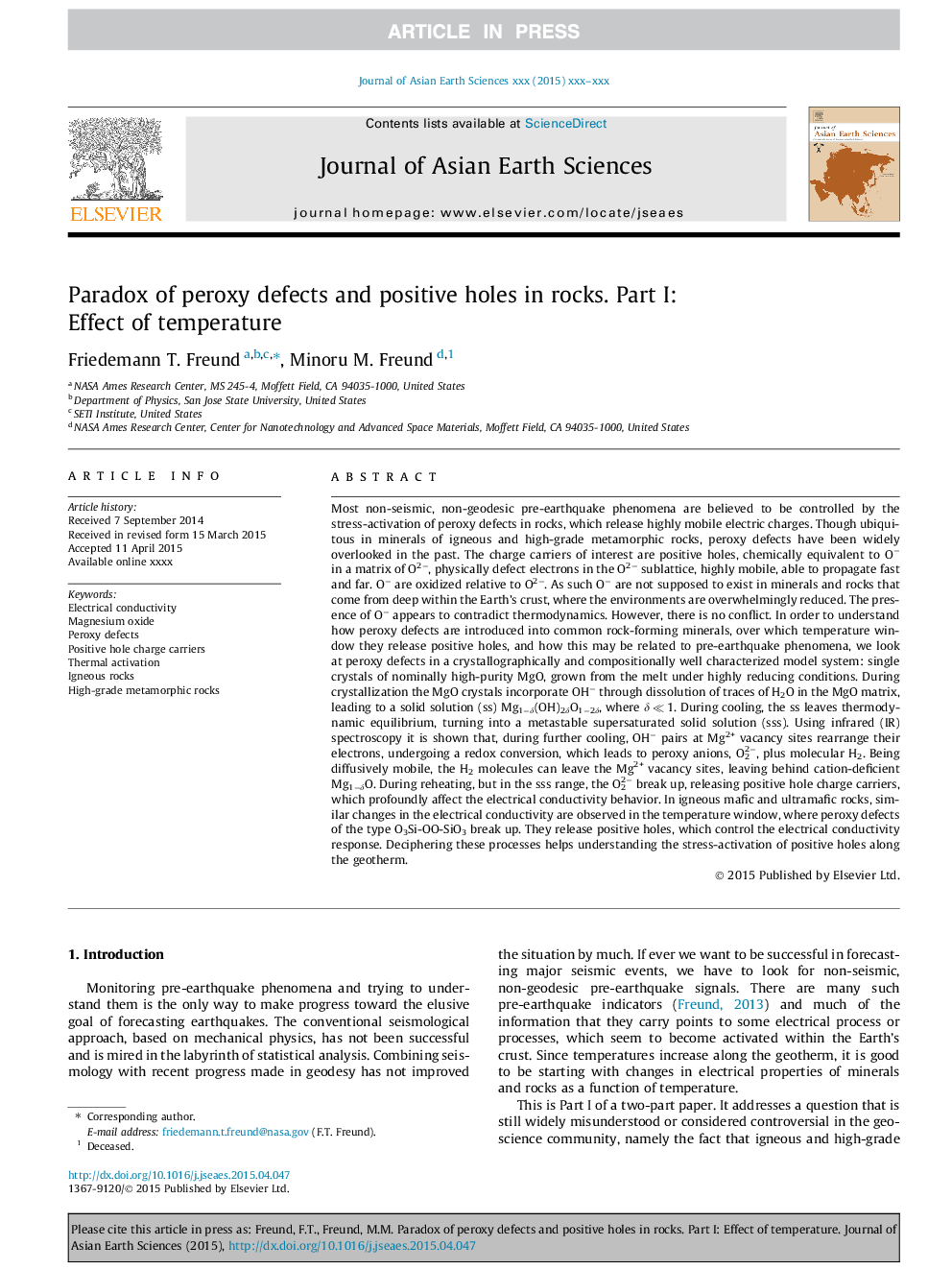| Article ID | Journal | Published Year | Pages | File Type |
|---|---|---|---|---|
| 6444074 | Journal of Asian Earth Sciences | 2015 | 11 Pages |
Abstract
Most non-seismic, non-geodesic pre-earthquake phenomena are believed to be controlled by the stress-activation of peroxy defects in rocks, which release highly mobile electric charges. Though ubiquitous in minerals of igneous and high-grade metamorphic rocks, peroxy defects have been widely overlooked in the past. The charge carriers of interest are positive holes, chemically equivalent to Oâ in a matrix of O2â, physically defect electrons in the O2â sublattice, highly mobile, able to propagate fast and far. Oâ are oxidized relative to O2â. As such Oâ are not supposed to exist in minerals and rocks that come from deep within the Earth's crust, where the environments are overwhelmingly reduced. The presence of Oâ appears to contradict thermodynamics. However, there is no conflict. In order to understand how peroxy defects are introduced into common rock-forming minerals, over which temperature window they release positive holes, and how this may be related to pre-earthquake phenomena, we look at peroxy defects in a crystallographically and compositionally well characterized model system: single crystals of nominally high-purity MgO, grown from the melt under highly reducing conditions. During crystallization the MgO crystals incorporate OHâ through dissolution of traces of H2O in the MgO matrix, leading to a solid solution (ss) Mg1âδ(OH)2δO1â2δ, where δ âªÂ 1. During cooling, the ss leaves thermodynamic equilibrium, turning into a metastable supersaturated solid solution (sss). Using infrared (IR) spectroscopy it is shown that, during further cooling, OHâ pairs at Mg2+ vacancy sites rearrange their electrons, undergoing a redox conversion, which leads to peroxy anions, O22â, plus molecular H2. Being diffusively mobile, the H2 molecules can leave the Mg2+ vacancy sites, leaving behind cation-deficient Mg1âδO. During reheating, but in the sss range, the O22â break up, releasing positive hole charge carriers, which profoundly affect the electrical conductivity behavior. In igneous mafic and ultramafic rocks, similar changes in the electrical conductivity are observed in the temperature window, where peroxy defects of the type O3Si-OO-SiO3 break up. They release positive holes, which control the electrical conductivity response. Deciphering these processes helps understanding the stress-activation of positive holes along the geotherm.
Keywords
Related Topics
Physical Sciences and Engineering
Earth and Planetary Sciences
Geology
Authors
Friedemann T. Freund, Minoru M. Freund,
